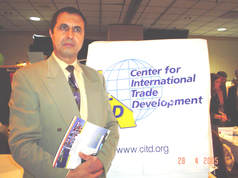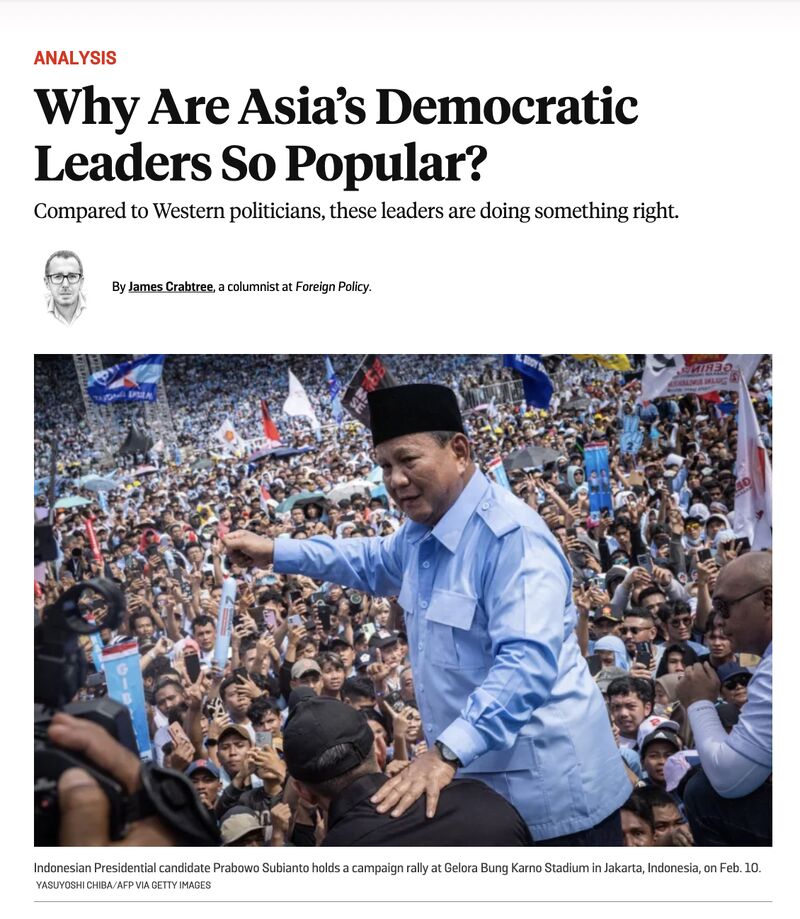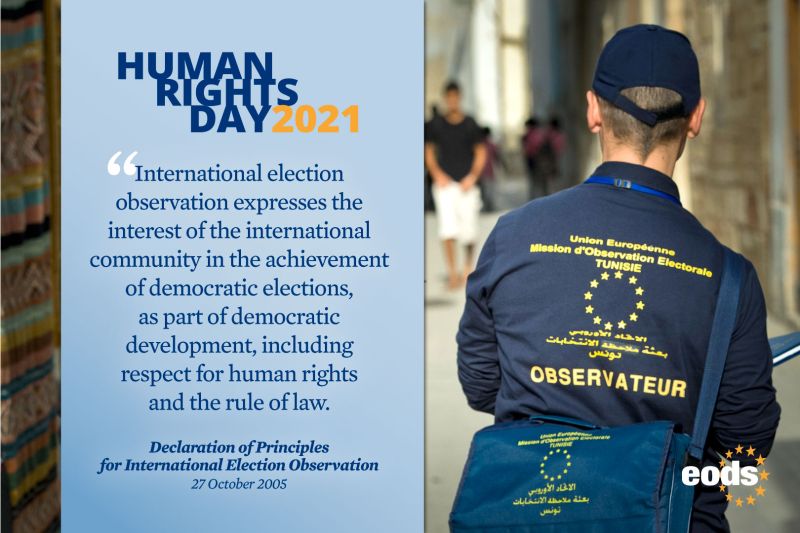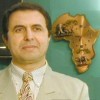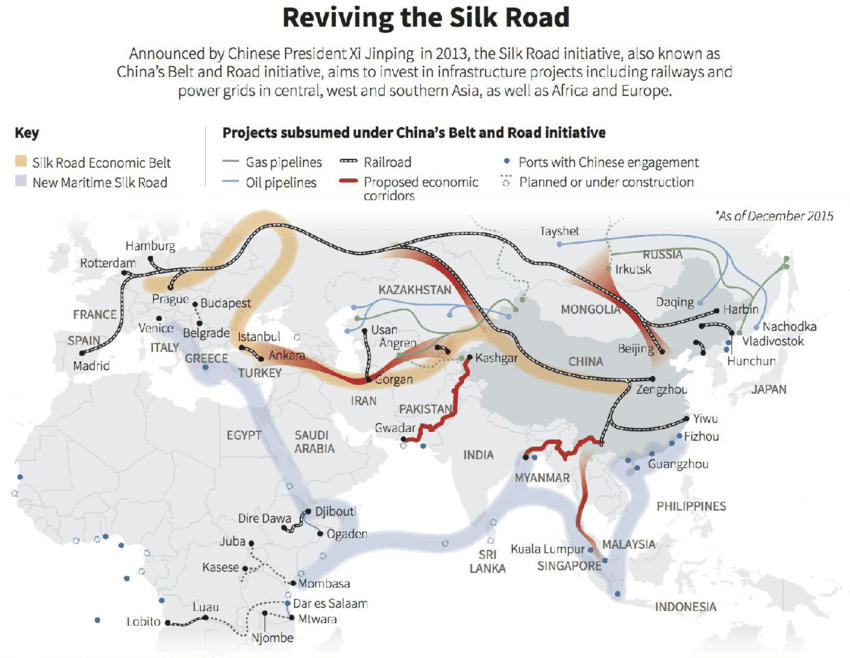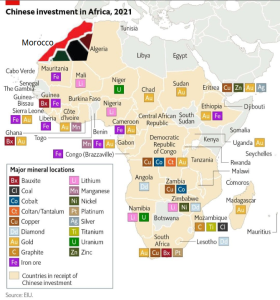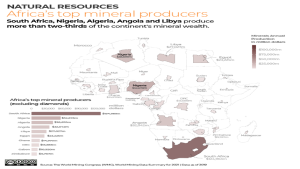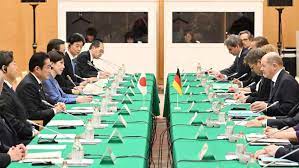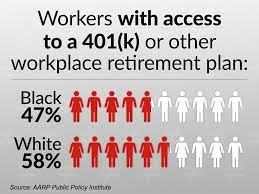
Google paid Apple $20B for search
Share
By Emma W. Thorne, Editor at LinkedIn News
Updated 3 hours ago
Google parent Alphabet paid Apple $20 billion in 2022 for Google to be the default search engine in the Safari web browser. That’s according to newly unsealed court documents in the Justice Department’s antitrust case against Google, which heads into closing arguments Thursday and Friday. The feds argue that Google has illegally dominated the online search market and its related advertising. The case has revealed exactly how much Apple relies on those payments from Google, which made up more than 17% of the iPhone maker’s 2020 operating income. A decision is expected later this year.
- Meanwhile, Google is advocating for a change in immigration policy so the U.S. can attract more AI talent, The Verge reports.
- The tech giant has just laid off 200 workers in its “Core” division, moving some jobs to India and Mexico.
- Meanwhile, slower iPhone sales are expected to be a drag on Apple, as it gets set to report second quarter earnings Thursday.
Storyline feed updates
Marcus KingMarcus King• 3rd+• 3rd+Growing freelance and short-term opportunities.Growing freelance and short-term opportunities.
14h • 14h •Follow
Apple collects $20b annually from Google for search referrals. I don’t typically do math in public, but these newly released figures juxtaposed against existing datasets reveal astonishing insights:
– Google & Apple’s accord delivered Apple $20b in 2022, a 36% slice of the $55b Google earned from iPhone users.
– A 36% slice of anything is lofty – especially when you’re not providing a service in return. Compare that to AppStore (30%); Uber Eats (6-30%); AirBnB (<14%).
– AsiaPac, representing about 18% of Google’s business, therefore contributes up to $4b to Apple’s endowment.
These agreements kill innovation and make digital marketing more expensive and less accessible for small businesses.
Google’s Payments to Apple Reached $20 Billion in 2022, Antitrust Court Documents Show
99
- 24 comments
- 17 reposts

Thomas BushnellView Thomas Bushnell’s profile (He/Him) • 3rd+Staff Software Engineer
3m
Walk me through the reasoning here. How exactly do “these agreements” kill innovation or make digital marketing more expensive?
If I recall the testimony correctly as reported in the press, Apple testified that it believed Google had a superior product. If it signed an agreement with a company that gave it more revenue, but had a weaker product, then we could certainly see it harming innovation. But Apple testified to the opposite.
Similarly, advertisers are bidding against other advertisers for placement. Of course, those ads are cheaper on less popular search engines. But they’re also less valuable. We can’t take the relatively cheaper ads on Bing and assume that if Apple partnered with Bing the same ad rates would continue: instead, advertisers would bid up the value of Bing ads proportionately to the perceived value of the increased visibility on iOS.
Now, we might argue that iOS would be better for its users if they had an easy and open choice of search engine, rather than a default with an annoying switching procedure. But that’s an argument that Apple is producing an inferior product; perhaps this means that Apple customers are being harmed. But I’m not clear how that harms advertisers.
Funny
Keith SpiveyView Keith Spivey’s profile • 3rd+Customer First Innovator – Change Agent – Digital Sherpa – Founder – Angel Investor
3h(edited)
This is like the stock market, GDP, or Employment Numbers.
When you peel back the cover page and understand how the results are calculated, it’s pretty bleak and GCP / Apple both don’t look nearly as healthy. Like 36% of 2022 GDP comprised of Gov Spending, or Unemployment excluding people who have “quit looking”…
hashtag#dothemath hashtag#detailsmatter
Why aren’t there “clawbacks” on CEO pay when people have to be fired to resolve their poor decisions?
Like
John BrockView John Brock’s profile (He/Him) • 3rd+Servant Leadership Driven Full Cycle Customer Success Management | Project Management | Strategic Account Management
1h
We all need to stop anthropomorphizing Google. It’s just another organization with a cute and colorful name, out to make as much money and gain as much power as it possibly can to enrich the lives of leadership and investors and will do whatever it takes to reach that goal. Google is not the internet. Google is not the future of technology. Google absolutely does not own the moral high ground. Google is a faceless, legal entity, living only on paper, with an asymmetrical morality that reacts to internal and external threats, as organizations, particularly public ones are called to do, if they adhere to the type of pseudo religious capitalism that is dominantly practiced today. Further, it is very clear that working for Google and similar companies does not indicate intrinsic enlightenment or the achievement of a certain level of intellectually moral sophistication. Sorry folks, but it’s true. Finally, Google will never change, because it can never change, not in the way the term is meant in this context. Google will continue to “pivot” it’s moral code to meet the needs of it’s leadership and investors financial goals because that is what a pseudo religious capitalistic organization is designed to do.
Like
1 Reply1 Comment on John Brock’s comment

Brittany LeeView Brittany Lee’s profile (She/Her) • 3rd+Capital Partners
39m
John Brock Yes
Like
Vaughn HubbardView Vaughn Hubbard’s profile (He/Him) • 3rd+Bachelor of Arts – BA in Political Science at The University of New Mexico
4h
Can’t afford to pay your employees to survive, but we can afford to drop $20 BILLION on influencing our search results.
Like
Damian RodriguezView Damian Rodriguez’s profile • 3rd+Programming Manager at TelevisaUnivision
17m
Smart move for Apple to get users to use safari! If Apple were to use Bing, I’m sure consumers would delete safari altogether and download Chrome.
Like

Bill DavisView Bill Davis’ profile • 2ndEnhancing beach, ocean, lake, river and stream conservation through more enlightened capitalism.
5h
Big tech is an oiligopoly, https://www.investopedia.com/terms/o/oligopoly.asp
“An oligopoly is a type of market structure in which a small number of firms control the market. Where oligopolies exists, producers can indirectly or directly restrict output or prices to achieve higher returns. A key characteristic of an oligopoly is that no one firm can keep the others from having significant influence over the market. An oligopoly differs from a monopoly, in which one firm dominates a market.”

Oligopoly: Meaning and Characteristics in a Market
investopedia.com
Like
1 Reply1 Comment on Bill Davis’ comment
Cory R. Cox, MBAView Cory R. Cox, MBA’s profile • 2ndChief Officer: Commercial (CCO), Growth (CGO), Product (CPO), Revenue (CRO), Strategy (CSO) | Executive Vice President (EVP) & General Manager who leads Growth Transformations at 13.25% CMGR & Revenue from $0 to $350M
51m
Bill Davis Yup. And that which we don’t regulate, will always seek in a capitalist system to profit as much as possible. And restraint of trade is but one enabler. I loved my antitrust coursework at Texas McCombs School of Business. Hard stuff to study, but wildly cool to understand and process. I found an exam once on monopsony to be among the hardest I have ever taken. Along with some on the Uniform Commercial Code in Commercial Transactions Law. hashtag#law hashtag#study hashtag#school hashtag#university hashtag#class hashtag#businesslaw
LikeReply
Ann KingView Ann King’s profile (She/Her) • 3rd+Organizational Change Manager
59m
Small business, and especially micro business is the big looser in this for sure.
LikeReply
Aino KoskelaView Aino Koskela’s profile • 3rd+Interior Design Independent Contractor
2h
I think Google is unduly influencing the market by paying huge sums of money to ensure its dominance in the market, thus limiting the space for other competitors to grow. It highlights the competitive and cooperative relationship between the giants in the technology industry and raises questions about the fairness of competition in the market.
Like
Katie WalshView Katie Walsh’s profile (She/Her) • 3rd+UX Designer | UX Researcher | Product Development Manager
29m
Everyone was using google search either way! very smart move for Apple!
LikeReply
Valeriana Colón, Ph.D.View Valeriana Colón, Ph.D.’s profile • 2ndFuture-proofing orgs with IT process innovation | Learning Scientist
5h
Impressive analysis! This deep dive into Apple and Google’s financial arrangements really highlights the vast impact of such partnerships on the broader tech and marketing ecosystems.
Like
Donna RiordanView Donna Riordan’s profile • 3rd+Free Legal Advice & Counseling Services For Leon County Promise Zone & Low Income Residents
2h
Then perhaps it’s time to start using other utilities, many of which are highlighted in this blog by Semrush.
https://www.semrush.com/blog/alternative-search-engines/

21 Search Engines Other Than Google (Best Alternatives in 2024)
semrush.com
LikeReply

Sean StitesView Sean Stites’ profile • 3rd+A rising tide raises all ships!
5h
Evidently it is providing a service – access is a service now especially with the reach & loyalty of Apple (particularly amongst iPhone users).
Like
🇺🇸 Matt StormsView 🇺🇸 Matt Storms’ profile • 2ndSEO International Consultant – E-commerce Growth Marketing & SEO – fmr SEO Manager at TripAdvisor – U.S. Navy Veteran – Expert Witness
3h
Time to short Apple stock, Google is gonna lose this case and Apple is gonna get hit in the bank.
Like

Sean StitesView Sean Stites’ profile • 3rd+A rising tide raises all ships!
5h
P.S. and I am all for increased competition & small business gaining better access & leveraging it to innovate.
LikeReply
John BaniakView John Baniak’s profile • 3rd+Improvement in Life
3h
Taking over and manipulating the public. Google’s mind control starts.
Like
Joe BrunnerView Joe Brunner’s profile • 2ndAffirmed Systems CEO, CLOUD ASSURE™
4h
Bing is horrible. like opening a spyware page, copying all the ads and pasting it into Microsof Word. That is how horrible the results look in Bing. Consumers benefited from this – think of the billions of hours saved not clicking on junk links to find something?
LikeReply
Lorraine NobleView Lorraine Noble’s profile (She/Her) • 3rd+Seasoned Customer Service Professional
4h
Incoming question from less than impressed by AI trend. What does it say about US education system that Google need to search for skilled talent from India and Mexico?
Like
Dave PennyView Dave Penny’s profile • 3rd+VP of Partner Solutions
5h
Sounds like a fair deal
Like
Ronnie NjangView Ronnie Njang’s profile • 3rd+Building a one-person local business newsletter and sharing my progress along the way.
2h
Sounds like gret business to me.
LikeReply
Norman RaglandView Norman Ragland’s profile • 3rd+Director of Product Management at Observint Technologies
1h
The Beast
😄
LikeReplyShow 2 more comments
Andy WangAndy Wang • 2nd• 2nd🏆 LinkedIn Top Voice | Financial Advisor to Families & Business Owners | Advisor to 401(k) Plans | Forbes Top 10 Personal Finance Podcast | Featured: Barron’s, Reuters, Investopedia🏆 LinkedIn Top Voice | Financial Advisor to Families & Business Owners | Advisor to 401(k) Plans | Forbes Top 10 Personal Finance Podcast | Featured: Barron’s, Reuters, Investopedia
Visit my website3h • 3h •Follow
Did you know that Alphabet paid Apple a whopping $20 billion in 2022? This revenue share secures Google as the default search engine in Safari. As investors, it’s important to keep a close eye on these tech giants. Microsoft is currently ahead of Apple in AI, integrating AI capabilities into its products, and courting Google to make Bing the default browser.
Meanwhile, Apple’s changes to its App Store policies in Europe, aimed at complying with the EU Digital Markets Act, may negatively impact its services revenue. Additionally, the potential antitrust lawsuit by the Department of Justice, also focused on the App Store, could further pressure Apple’s business and financial results.
With this battle brewing, which search engine would you rather have on your smartphone? Google or Bing? Share your thoughts in the comments below!
#LITrendingTopics #technology #investing #FinancialAdvisor

Google paid Apple $20B for search
4
- 2 comments
- 1 repost
Jason Ong 王励德 🇸🇬Jason Ong 王励德 🇸🇬• 3rd+• 3rd+Head of Customer Relations – CRM & Data Insights/Partnerships/Digital Transformation/ Strategist/SpeakerHead of Customer Relations – CRM & Data Insights/Partnerships/Digital Transformation/ Strategist/Speaker
10h • 10h •Follow
The global layoff trend is accelerating, with wave after wave. Even core teams or talents are not spared. Why are they not re-deployed to other roles if they are core talents?
Well, it seems like having the right skills and knowledge are no longer enough. The person must also come with a cheaper price tag.
Global companies are now laying off some higher costs employees to recruit similar talents in cheaper markets. Does it mean companies are no longer willing to pay for talents?
Challenging times. If such a trend indeed becomes more prevalent, the impact is huge. Firstly, upskilling must follow with salary downsizing or else the person will still be not competitive as some of the employers are now hiring base on price? Secondly, taking on MBA is no longer favourable as it increase the person’s price tag? Thirdly, as core talents get more experience with age and more expensive with promotion and annual increment, they are moving on a higher layoff risk? The list of questions can be a long one as existing norms are being challenged.
Connect with me and stay tuned. The future of work indeed is steering in all directions with major global business players setting new precedence that smaller businesses may follow. The sentence, “talents don’t come cheap”, must now be changed.
#layoff #talentretention #futureofworktrends #futureofwork
Google lays off hundreds of ‘Core’ employees, moves some positions to India and Mexico
28
- 7 comments
- 5 reposts
Albert FongAlbert Fong• 2nd• 2ndProduct Marketing Leader & AdvisorProduct Marketing Leader & Advisor
12h • 12h •Follow
The tech industry’s approach to AI talent doesn’t compute. Citing a talent shortage, Google is urging the U.S. Department of Labor to amend immigration laws to make it easier to hire AI talent. Regardless of whether you support rules to attract talent, the timing is questionable considering the company’s recent layoffs of 12,000 workers.
Well, that’s a big ‘How do you do’. Google’s request taps into a lesser-known immigration process called Schedule A, which expedites work visas for foreign workers in occupations facing certified U.S. labor shortages. At a high-level, Google is pushing for an expansion of the Schedule A list to include fields like AI and cybersecurity. The company argues these are areas where they struggle to find enough qualified U.S. candidates to match their ambitious goals.
They’re scrambling more than eggs. The race for top AI talent is intense, and we’ve seen Microsoft, OpenAI, Meta, Amazon and of course, Google all running around like headless chickens to find AI talent to keep the sky from falling. No doubt, the potential of AI and its impact on humanity is significant. But in the search for AI relevance and dominance, many of the decisions coming from the tech industry these days seem more impulsive rather than strategic.
To be or not to be, bad timing trumps all. From a pure optics standpoint, Google’s request feels ill-timed especially given how the company has continued to downsize its own workforce. Here’s the other issue that plenty of critics will undoubtedly call out: employee upskilling and training. Just about every major AI player in the tech industry (many of which are reporting gangbuster earnings) has used similar talking points stressing the importance of developing employees to take advantage of the AI future. Unfortunately, seeing is believing and thus far, these companies have been better at preaching than doing. At a time when many human workers are concerned about the negative impact of AI on jobs and their well-being, the actions of those in the tech industry have only served to further heighten these anxieties.
There’s no arguing that immigration is a key component to our economic growth. With a worker shortage that will only get worse over the next several decades due to declining birth rates and an aging workforce, pro-immigration policies will only become more critical. But when tech companies are shedding so many tech workers, requesting that the government ease policies because it’s hard to hire AI talent seems disingenuous if not hypocritical https://lnkd.in/g3fB8KPR #google #alphabet #immigration #artificialintelligence #cybersecurity #talent #hiring #workforce #unitedstates

Google urges US to update immigration rules to attract more AI talent
17
- 2 comments
- 1 repost
Karan BhatiaKaran Bhatia• 2nd• 2ndGlobal Head of Government Affairs & Public Policy at GoogleGlobal Head of Government Affairs & Public Policy at Google
18h • 18h •Follow
Access to the world’s best talent is going to be a key determinant of success in the AI-driven global economy. America’s cumbersome high-skilled immigration system remains a drag on its AI leadership. That’s why we’re encouraging the Department of Labor to move quickly to modernize its policies to better attract high-skilled workers, especially in fields like AI and cybersecurity. Read more in The Verge ↓

Google urges US to update immigration rules to attract more AI talent
Daniel L.Daniel L.• 3rd+• 3rd+Driving Innovation and Transforming Enterprises | Technology Leadership | Architectural Expertise | Strategic Visionary | Technical Delivery Excellence | USAF VeteranDriving Innovation and Transforming Enterprises | Technology Leadership | Architectural Expertise | Strategic Visionary | Technical Delivery Excellence | USAF Veteran
22h • 22h •Follow
🚀💡 Are you ready to dive into the future of tech talent wars? 🌟
Google is pushing for change in U.S. immigration policies to include AI and cybersecurity pros in Schedule A occupations. 🤖🔒
The industry is hungry for AI specialists, with SpaceX even facing a lawsuit for alleged employment discrimination. 💰💼
The battle for top talent is on fire, with offers hitting the $1 million mark and companies like Meta going all-in to snag the best without interviews. 🌐💥
Let’s see where this high-stakes game leads us next!
https://lnkd.in/grF5D4mM
#TechTalent #AI #Cybersecurity #Innovation #FutureOfWork
2
- 2 comments
Ryan DuerRyan Duer• 3rd+• 3rd+Software Engineer – Frontend – Full Stack – React – JS – Typescript – CSS3 – Node – REST- Mongodb – Passionate about a11y development, ensuring the web is accessible for all users 🫶♿Software Engineer – Frontend – Full Stack – React – JS – Typescript – CSS3 – Node – REST- Mongodb – Passionate about a11y development, ensuring the web is accessible for all users 🫶♿
23h • 23h •Follow
Forget “AI is taking our jobs”. The biggest issue I’m facing as a Software Engineer looking for work is this. It wasn’t okay when it happened in manufacturing and it’s not okay now.
Google lays off hundreds of ‘Core’ employees, moves some positions to India and Mexico
27
- 12 comments
- 2 reposts
Open Emoji Keyboard
Jennifer EliasJennifer Elias• 2nd• 2ndTech Reporter at CNBC.comTech Reporter at CNBC.com
1d • 1d •Follow
Just ahead of its blowout first-quarter earnings report last week, Google laid off at least 200 employees from its “Core” teams, in a reorganization that will include moving some roles to India and Mexico, we’ve learned.
Google’s Core unit is responsible for building the technical foundation behind the company’s flagship products and protecting users’ online safety, according to Google’s website. Core teams include key technical units from information technology, its Python developer team, technical infrastructure, security foundation, app platforms, core developers and various engineering roles.
“Announcements of this sort may leave many of you feeling uncertain or frustrated,” Asim Husain, vice president of Google Developer Ecosystem, wrote in an email to his team last week.
Even with digital advertising rebounding in the past couple quarters, Alphabet has continued downsizing, with layoffs across multiple organizations this year.
Prabhakar Raghavan, Google’s senior vice president overseeing search, recently referenced heightened competition, a more challenging regulatory environment and slower organic growth as the company’s “new operating reality.”
Google lays off hundreds of ‘Core’ employees, moves some positions to India and Mexico
Riccardo SchiavoniView Riccardo Schiavoni’s profile • 3rd+MS | Software Engineer
23h
Google went from being the plalce where technology beyond imagination was built, to being a factory of disappointments 😦
Like
Vaughn HubbardView Vaughn Hubbard’s profile (He/Him) • 3rd+Bachelor of Arts – BA in Political Science at The University of New Mexico
19h
“If you don’t let a billionaire pay you pennies for your work that billionaire will take his beneficence to another nation, so it’s not possible to pay you more! Billionaires first!”
‘Okay, I let the billionaire pay me pennies for doing his work while sat in the office and spun in a chair. What’s my reward?’
“Your job has been relocated to India anyway, enjoy unemployment!”
Like
Lorne RogersView Lorne Rogers’ profile (He/Him) • 2ndManagement Consultant | Programme Manager | Solutions/Enterprise Architect | Technology Advisory
2h
“Wooohooo! Our 1st quarter financials were GREAT!”
“That’s awesome boss! That means our executive bonuses will be even bigger! What should we do to celebrate?”
“Oh! I know! Let’s strip a few hundred more people and families of their livelihoods!”
“Heyyyyy, that’s a fabulous idea! Then we can re-route the money we were paying them to our bonuses!”
🤑 🤑
Like

Dave GoodmanView Dave Goodman’s profile • 3rd+Enterprise Product Owner
3h
This is reminicent of Disney laying off its employees and replacing them with foreign workers on H-1B visas. Similar practice in their theme parks with low wage workers. There was, at the time, widespread criticism from workers, labor advocates, and certain politicians, who accused Disney of prioritizing cost-cutting measures over the welfare of American workers and their livelihoods.
Today, there exists a real malaise among the American workforce, a mix of entitlement attitudes, demand for pay in excess of real self worth and poor overall productivity. Highly educated foreign workers, who often endured rigorous conditions and limited opportunities for advancement in their home countries, are willing to accept lower wages in the United States in pursuit of a better quality of life. This phenomenon is by no means novel; it echoes historical patterns of exploitation seen in industries such as technology, reminiscent of the labor practices during the industrial revolution.
Like

Andy W.View Andy W.’s profile (They/Them) • 3rd+Fractional Human
22h
I’ve lost count of the number of times I’ve heard these arguments before someone outsourced something critical. This story only has one ending and it’s not unicorns and rainbows. Unless you’re sitting on a pile of stock options that is.
Like
3 Replies3 Replies on Andy W.’s commentLoad previous repliesLoad previous replies on Andy W.’s comment

Kevin InocetoView Kevin Inoceto’s profile • 3rd+Sr. Manufacturing Engineering Technician
21h
Michal Pěček Surprise!
Like
Rachanaa SharrmaView Rachanaa Sharrma’s profile (She/Her) • 3rd+𝗗𝗶𝗿𝗲𝗰𝘁𝗼𝗿 𝗢𝗽𝗲𝗿𝗮𝘁𝗶𝗼𝗻𝘀 & 𝗠𝗮𝗿𝗸𝗲𝘁𝗶𝗻𝗴 | 𝗦𝗮𝗹𝗲𝘀 | 𝗕𝘂𝘀𝗶𝗻𝗲𝘀𝘀 𝗱𝗲𝘃𝗲𝗹𝗼𝗽𝗺𝗲𝗻𝘁◾️Automotive, Real Estate & Renewable Energy sectors◾️Grew sales by 300% through aggressive GTM Strategies
4h
It’s always disheartening to hear about layoffs, especially in such critical technical roles. The restructuring and shifting of roles to different locations reflect the ever-evolving nature of technology companies like Google. The reasons cited by Prabhakar Raghavan for these changes—heightened competition, regulatory challenges, and slower growth—underscore the complex landscape that Google and other tech giants navigate. It’s important for companies to adapt to changing circumstances, but it’s equally important to support affected employees during such transitions.
LikeReply
Beverly A.View Beverly A.’s profile (She/Her) • 3rd+“🌟 A Futurist who is working to bring solutions and address the needs of people around the world. Advocate for creating unique personal data ownership valuation practices. Working to personalize intrinsic data economies
21h
This is an example of poor leadership that is protecting his role and not considering the lives of those he is letting go.
Like
Florin P.View Florin P.’s profile • 3rd+EMI/EMC • Lightning • HIRF • Avionics • RF
6h
Don’t look back, folks.
The talented people leaving it will survive… do not lose hope.
Some companies, it seems, grow too old and too large for the times…
LikeReply
Mark Anthony GermanosView Mark Anthony Germanos’ profile (Professor, Computer Guy) • 2ndI go into networks and audit the network security, or lack of security… I have seen a lot. I work with you to improve your security, create your disaster recovery plan and make things work faster.
5h
Transferring tech jobs from the US to Mexico and India. BTW, how is Alphabet stock doing? Ah yes, up 12% in 5 days.
Like
Pete DeuelView Pete Deuel’s profile • 3rd+Automation Solutions Engineer | Expert Technologist | Full Stack Troubleshooter | Long-time Netizen
23h
It seems the business plan is labor market arbitrage on the premise that all tech workers are fungible. And then with the cost savings in pocket, they will ___________
<Match Game Thinking Cue music>
Like
Matt TurnerMatt Turner• 2nd• 2ndDeputy Editor-in-Chief at Business InsiderDeputy Editor-in-Chief at Business Insider
1d • 1d •Follow
Google wants the US to change immigration rules to help it hire AI talent.
It told the US Department of Labor that the list of roles considered scarce must be broadened. The company said its need for AI roles will “increase significantly” in the coming years.
Hugh Langley reports.

Google says immigration rules are making it hard to hire top AI talent
13
- 3 reposts






